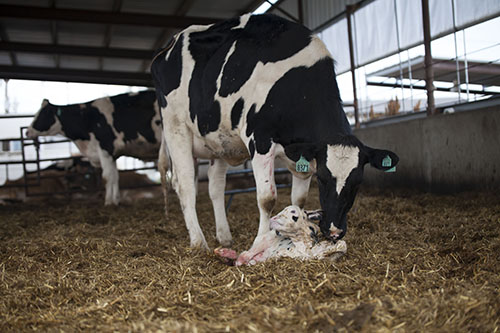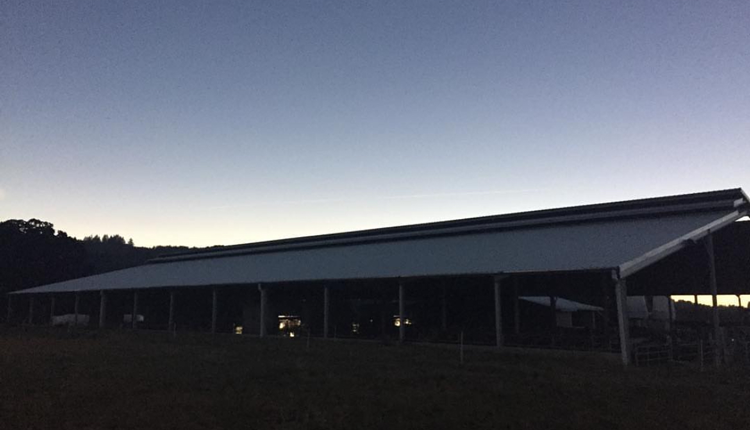
While it's strongly driven by a cow's diet, rumination time is influenced by much more than the amount and quality of fiber in the bunk. Several recent studies have shown that monitoring cow's rumination activity before and after calving can be quite useful as a means to identify animals that are at an elevated risk of developing an early lactation disease.
German researchers have shown that cows stopped rumination approximately two hours before giving birth and resumed nearly six hours after calving. "Rumination normally dips by about 70 percent at calving and rises by 50 minutes per day after birth, noted Rick Grant, with the Miner Institute, at the Cornell Nutrition Conference. Severe inflammation, however, has been linked with a slower rise in rumination time postcalving.
In one study, 90-plus percent of cows that had low rumination during the first three to six days in milk experienced clinical disease. Meanwhile, only 42 percent of the cows that had higher rumination times came down with a clinical disease. The high-rumination group returned to average rumination levels by three days in milk. Cows with lower rumination times did not reach a stable rumination level until 15 days in milk.
This can be further inhibited by less than ideal housing conditions. Nearly 90 percent of rumination will occur while cows are lying down. "Each 2 percent gain in resting time is associated with a 7 percent boost in rumination," noted Grant. When cows experience conditions that impair lying time, rumination is likely inhibited.
More recently, researchers at Cornell University compared the precalving rumination patterns of cows that developed health disorders to cows that did not through the first 30 days in milk. This research looked specifically at rumination in the week prior to calving.
For all health disorders combined, rumination time was less for cows with health disorders (439 minutes per day) compared to healthy herdmates (456 minutes per day). In the week leading up to parturition, rumination time was lowest on the day of calving.
The researchers concluded that starting seven days before calving, rumination patterns were altered in cows that suffered health disorders within 30 days in milk. Specifically, rumination time was reduced in cows that suffered metabolic disorders and metritis but not in cows with a retained placenta or mastitis.
The rumination monitoring system identified cows with a displaced abomasum, ketosis, metritis and, to a lesser degree, mastitis earlier than farm personnel. "For example, a displaced abomasum was flagged by the rumination system nearly three days before clinical signs became evident," noted Grant.

The author is an associate editor and an animal science graduate of Cornell University. Smith covers feeding, milk quality and heads up the World Dairy Expo Supplement. She grew up on a Medina, N.Y., dairy, and interned at a 1,700-cow western New York dairy, a large New York calf and heifer farm, and studied in New Zealand for one semester.





